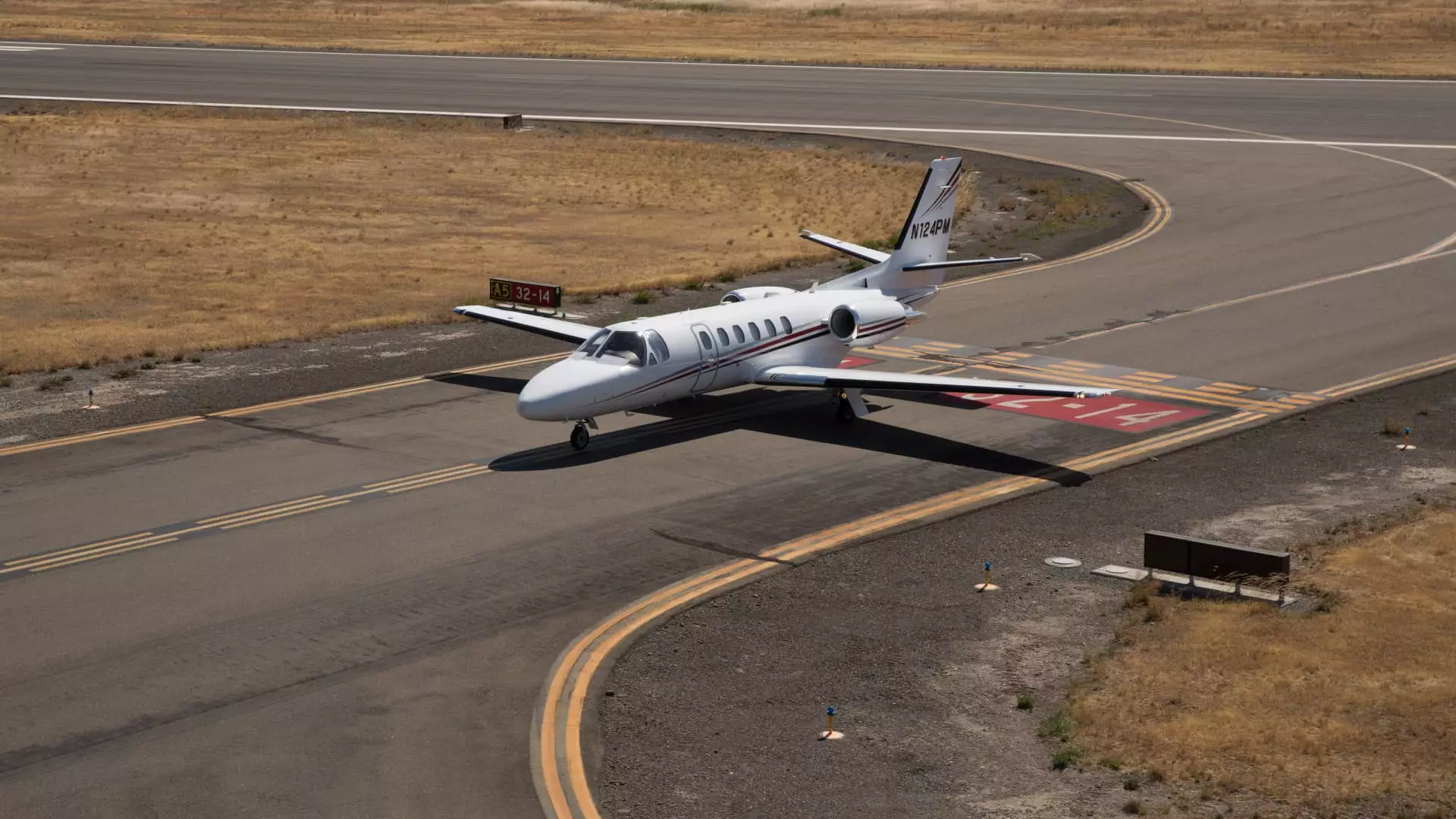The recent landscape of consumer confidence reveals a harrowing narrative for the aviation industry, particularly in the realm of business jet sales. According to Barclays’ Business Jet Indicator, there has been a staggering 49% decrease in customer interest in purchasing business jets from March onwards. This decline signals more than just diminished enthusiasm; it encapsulates a broader malaise affecting both consumer behavior and economic optimism. The survey conducted from April 9 to 15, with responses from 65 business jet broker-dealers and financiers, highlights a troubling trend that not only affects the aviation sector but reverberates throughout the economy as a whole.
When consumer confidence wanes, the ramifications are severe. Even affluent travelers—those typically insulated from economic downturns—are refraining from significant investments in luxury assets like private jets. The composite score of the market, calculated from various factors including inventory levels and pricing outlook, dropped from a relatively healthy 52 to a troubling 40. This 23% plunge marks the most significant downturn reported by Barclays since the onset of the COVID-19 pandemic, showcasing an alarming shift in market sentiment.
The Tariff Factor
One cannot overlook the weighty impact of current economic policies—particularly tariffs—on this downward trend. In the Barclays survey, an overwhelming 93% of respondents indicated that tariffs would negatively influence demand for new aircraft. Given that business jets represent not only a luxury but also a significant capital investment for many corporate entities, the uncertainty surrounding tariffs leaves prospective buyers in limbo. The apprehension among business jet buyers is palpable, with nearly half of the survey participants noting that their clients have put purchases on hold.
It’s essential to understand that this isn’t merely a fleeting moment of hesitation but rather a reflection of broader economic uncertainties that businesses face today. The fear isn’t just of diminished sales; it encompasses a fear of the erosion of operational viability amid ongoing trade disputes and fluctuating economic policy landscapes. The complex web of consumer behavior, tariff impacts, and the broader economic health feeds into a vicious cycle that threatens the sustainability of businesses across various sectors, including aviation.
Long-Term Effects of Economic Anxiety
The pessimism surrounding the demand for used jets further underscores the depth of this economic anxiety. Here, too, respondents expressed significant doubts with 67% anticipating negative consequences on demand. This high level of skepticism spells trouble for manufacturers and financiers in the business jet arena, where cyclical investment trends can often be masks for deeper systemic issues.
Yet, amidst this tempest, there could be a silver lining on the horizon—a potential legislative shift that may rejuvenate the market dynamics. The proposed extension of the Tax Cuts and Jobs Act, initially designed to incentivize investments through immediate deductions, may provide a much-needed jolt for the sector. Should lawmakers successfully return the deduction rate back to 100%, this could incentivize businesses to reinvest in equipment, including the purchase of business jets, that they might otherwise be reluctant to pursue in the current climate.
The Broader Implications
While the immediate focus is understandably on business jets, the implications of these consumer confidence trends are far-reaching. Indices like the Barclays Business Jet Indicator are critical touchstones, not just for the aviation industry but for the economy at large. This data reminds us that luxury markets often serve as bellwethers for overall economic health. Weakness in these markets suggests deeper issues at play, which could spiral and affect multiple sectors across the economy.
One must question the effectiveness of current policy measures in fostering a stable economic environment. The rise in tariffs, coupled with the ebb and flow of consumer confidence, paints a picture of an economy grappling with uncertainty—an uncertainty that can lead to stagnation and missed opportunities. Without proactive engagement from legislators to create a more favorable investment climate, the aviation industry, along with many others, may continue facing not only reduced demand but a loss of faith from consumers who need to feel secure before making high-stakes financial decisions.

